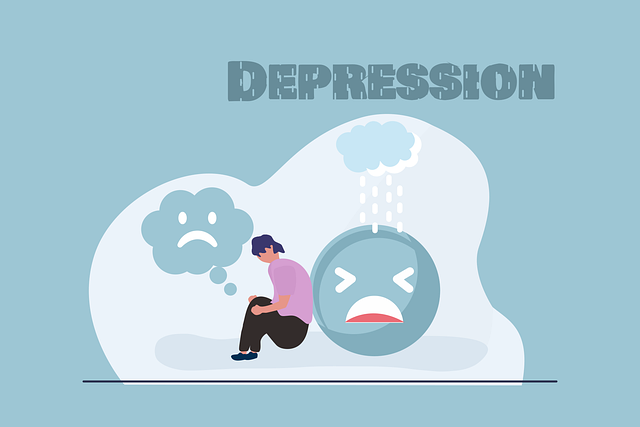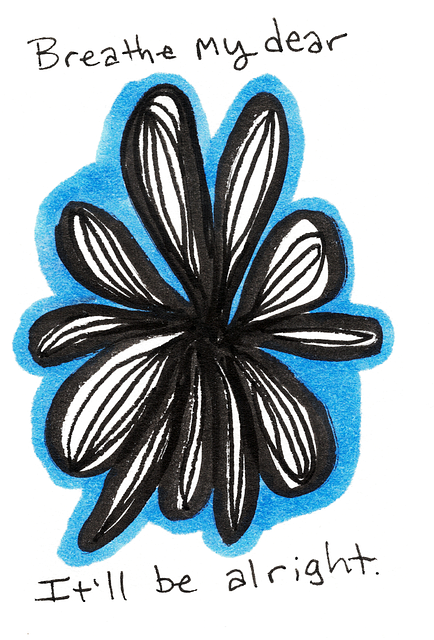Media portrayal significantly influences public understanding of bipolar disorder, with negative stereotypes hindering access to support services like Broomfield Bipolar Disorder Therapy. Positive and accurate media representations can reduce stigma, foster empathy, and encourage open conversations about mental wellness. Strategies for enhancing these portrayals include diverse storytelling, collaboration with mental health professionals, integrating mindfulness, and public awareness campaigns. The collective effort of industry professionals and audience engagement is crucial in breaking down stereotypes and contributing to a more inclusive society for individuals with bipolar disorder.
In today’s media landscape, the representation of mental illness is crucial in shaping public perception. This article explores how accurate portrayal can influence attitudes towards mental health, using Broomfield Bipolar Disorder Therapy as a case study. We delve into strategies for promoting positive representations, emphasizing the role of industry professionals and audience awareness. By fostering change, we aim to challenge stereotypes and enhance understanding of complex mental health issues.
- Understanding the Impact of Media Portrayal on Mental Health Perception
- Broomfield Bipolar Disorder Therapy: A Case Study in Accurate Representation
- Strategies for Promoting Positive Mental Illness Portrayals in Media
- Fostering Change: The Role of Industry Professionals and Audience Awareness
Understanding the Impact of Media Portrayal on Mental Health Perception

Media portrayal plays a significant role in shaping public understanding and perception of mental health issues, including conditions like bipolar disorder. The way mental illness is depicted in films, television shows, and news media can influence societal attitudes and, consequently, impact how individuals with these conditions are treated. For example, negative or stereotypical representations may contribute to stigma, leading to increased isolation and barriers to access Broomfield bipolar disorder therapy or other mental health support services.
On the other hand, positive and accurate media portrayals can help reduce stigma, foster empathy, and encourage open conversations about mental wellness. By presenting diverse narratives that emphasize emotional intelligence and effective stress management strategies, media content can contribute to a more inclusive and supportive society for those dealing with bipolar disorder or other mental health challenges.
Broomfield Bipolar Disorder Therapy: A Case Study in Accurate Representation

Broomfield Bipolar Disorder Therapy stands as a shining example of accurate mental illness representation in media. This initiative focuses on bipolar disorder, a condition often misunderstood and stigmatized. Through a comprehensive approach, the program offers valuable insights into the lives of individuals living with this mental health challenge. By combining therapy sessions, educational content, and personal narratives, Broomfield Bipolar Disorder Therapy bridges the gap between public perception and reality.
The project’s success lies in its commitment to emotional well-being promotion techniques tailored for bipolar disorder management. Community outreach program implementation has been pivotal, engaging various stakeholders to raise awareness and dispel myths surrounding the illness. Additionally, the Mental Wellness Podcast Series Production adds a dynamic element, providing accessible information and support to a wider audience. These strategies collectively contribute to fostering understanding, empathy, and improved mental health outcomes for those affected by bipolar disorder.
Strategies for Promoting Positive Mental Illness Portrayals in Media

To promote positive mental illness portrayals in media, several strategic initiatives can be implemented. One key approach is to encourage and support diverse storytelling that reflects the wide range of experiences within the mental health community. This includes featuring characters with various diagnoses, backgrounds, and identities, ensuring a more nuanced and accurate representation. Collaborating with mental health professionals and individuals living with bipolar disorder, depression, anxiety, or other conditions can help ensure authenticity in these narratives.
Additionally, integrating practices like mindfulness meditation and cultural sensitivity into media production can foster more empathetic storytelling. Public awareness campaigns development centered around mental health can also play a significant role in challenging stereotypes and providing education to the public. By incorporating these strategies, media platforms can contribute to breaking down stigma and promoting better understanding of complex mental health issues, such as those often associated with Broomfield Bipolar Disorder Therapy.
Fostering Change: The Role of Industry Professionals and Audience Awareness

Fostering change in how mental illness is represented in media requires a collaborative effort from industry professionals and audience awareness. Media outlets play a pivotal role in shaping societal perceptions, making accurate and empathetic portrayals of mental health conditions crucial. By involving mental health experts during production and consulting with individuals living with disorders like bipolar disorder therapy, filmmakers and content creators can challenge stereotypes and promote understanding.
Audience members also contribute to this shift by engaging in conversations about mental illness representation. Recognizing the impact of media on public perception, viewers can actively seek out diverse narratives and support stigma reduction efforts. Initiatives aimed at Anxiety Relief and Conflict Resolution Techniques within personal lives can extend to the broader community, fostering a more compassionate and informed society.
The representation of mental illness in media has a profound impact on societal perceptions and individual well-being. By examining cases like Broomfield Bipolar Disorder Therapy, we can see the potential for positive change through accurate and nuanced portrayals. Implementing strategies to promote diverse and empathetic media representations is essential, especially with industry professionals and audience awareness playing pivotal roles in fostering a more inclusive and supportive landscape. Through collaborative efforts, we can challenge stereotypes, enhance understanding, and improve mental health outcomes for all.













